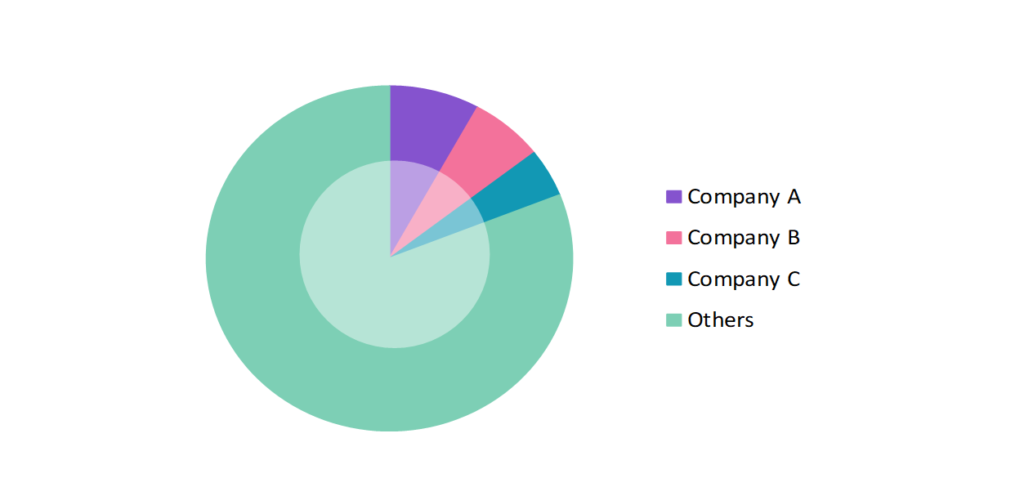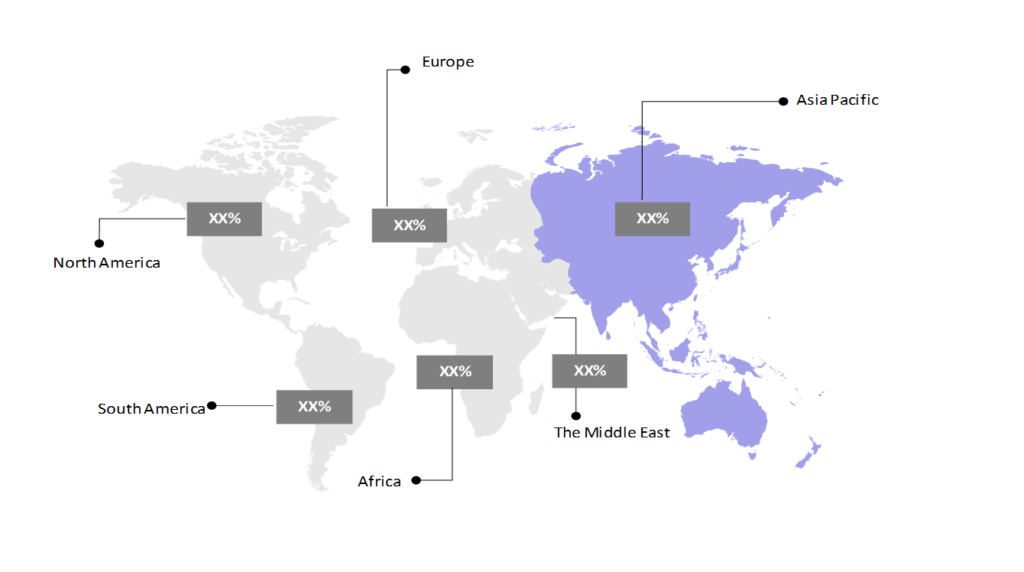Water Filters Market: Size, Share, Trends & Forecast (2024-2029)
The market report presents a thorough analysis segmented by Type (RO Filters, UV Filters, Carbon Filtration, Others); by End User (Residential, Commercial, Industrial); by Geography (North America, South America, Asia Pacific, Europe, The Middle East, Africa).
Outlook

- The water filters market is estimated to be at USD 16,693.71 Mn in 2025 and is anticipated to reach USD 22,074.35 Mn in 2030.
- The water filters market is registering a CAGR of 5.75% during the forecast period 2025-2030.
- The water filter market is witnessing significant growth driven by increasing demand for clean drinking water, stringent environmental regulations, and rising awareness of health risks related to contaminated water. Technological advancements, such as nanofiltration and Internet of Things (IoT) -enabled smart filters, are transforming the industry by enhancing efficiency and convenience. However, high initial costs, regulatory complexities, and the dominance of patented technologies present challenges to widespread adoption. The market continues to evolve as sustainability and innovation become central to future development.
Request a free sample.
Ecosystem

- The participants in the global water filters industry are always developing their strategies to preserve a competitive advantage.
- Smaller, regional players often cater to specific local markets or focus on niche segments like eco-friendly or portable filtration systems, which provide them with an edge in specialized areas.
- Several important entities in the water filters market include A. O. Smith Corp.; Veolia Water Technologies and Solutions; Evoqua Water Technologies Corp.; Pentair Plc; AXEON Water Technologies; and others.
Ask for customization.
Findings
| Attributes | Values |
|---|---|
| Historical Period | 2019-2023 |
| Base Year | 2024 |
| Forecast Period | 2025-2030 |
| Market Size (2025) | USD 16,693.71 Mn |
| Market Size (2030) | USD 22,074.35 Mn |
| Growth Rate | 5.75% CAGR from 2025 to 2030 |
| Key Segments | Type (RO Filters, UV Filters, Carbon Filtration, Others); End User (Residential, Commercial, Industrial); Geography (North America, South America, Asia Pacific, Europe, The Middle East, Africa) |
| Key Vendors | A. O. Smith Corp.; Veolia Water Technologies and Solutions; Evoqua Water Technologies Corp.; Pentair Plc; AXEON Water Technologies |
| Key Countries | The US; Canada; Mexico; Brazil; Argentina; Chile; China; India; Japan; Malaysia; The UK; Germany; Italy; France; Turkey; UAE; Egypt; South Africa |
| Largest Market | Asia Pacific |
Get a free quote.
Trends
- Nanofiltration and Advanced Membranes: Recent advancements in nanofiltration have enabled water filters to target contaminants at the molecular level, filtering out not only bacteria and viruses but also dissolved substances like heavy metals. This is achieved through the use of advanced materials such as graphene-based membranes, which offer high permeability, improved durability, and reduced maintenance needs. These advanced membranes are particularly useful in applications like desalination and wastewater treatment, where traditional filtration technologies may fall short.
- Smart Water Filters with IoT Integration: Smart water filters are becoming increasingly popular, offering users enhanced control and monitoring capabilities through IoT integration. These filters are equipped with sensors that track water quality and filter status in real time, which enables users to receive notifications when the filter needs to be replaced. Mobile apps linked to these systems also provide insights into water consumption patterns, which allows users to optimize their water usage. Brita has introduced smart pitchers that notify users via smartphones, which makes it easier to maintain high-quality water filtration.
- Sustainable and Biodegradable Filters: The growing emphasis on environmental sustainability has led to the development of water filters made from biodegradable materials such as coconut shells and plant-based fibers. These eco-friendly alternatives reduce the plastic waste associated with traditional filter cartridges, which makes water filtration more sustainable. Additionally, some companies are producing reusable and recyclable filters, minimizing the need for frequent replacements. For example, Soma offers plant-based, compostable filters that can be disposed of with minimal environmental impact.
Speak to analyst.
Catalysts
- Increasing Regulation on Industrial and Municipal Wastewater Disposal: Governments and environmental agencies are enforcing stricter regulations to prevent water contamination, prompting industries to adopt advanced filtration systems. For example, the European Union’s Water Framework Directive mandates that industries reduce pollutants in wastewater before discharge to protect aquatic ecosystems. Such regulations push businesses to implement more efficient treatment technologies to meet compliance standards and avoid penalties.
- Higher Efficiency with Longer Lifetime: Water filtration technologies that offer higher efficiency and extended lifetimes are gaining significant traction in the market. Innovations in filter materials, such as advanced membranes and nanofiltration techniques, enhance filtration performance while reducing maintenance and replacement needs. Consumers and industries alike are prioritizing filters that can operate over longer periods with minimal operational costs, which leads to increased demand for durable, energy-efficient filtration solutions.
- Growing Awareness of Waterborne Diseases and Health Concerns: Increased public awareness of the health risks associated with contaminated water, including waterborne diseases such as cholera, dysentery, and gastrointestinal infections, is driving the demand for high-quality water filtration systems. As consumers become more informed about the presence of harmful microorganisms, heavy metals, and chemical pollutants in their water supply, they are seeking reliable filtration solutions that provide safe, clean drinking water.
Inquire before buying.
Restraints
- High Initial Investment Costs: Advanced water filtration systems, particularly those utilizing innovative technologies such as nanofiltration and smart IoT-enabled filters, often come with high upfront costs. This can deter both consumers and industries from adopting these solutions, especially in regions with limited financial resources or where budget constraints dominate decision-making processes.
- Limited Access to Patented Technologies: The dominance of patented products in the water filtration market limits the ability of smaller companies and new entrants to innovate and compete effectively. Large market players that hold patents on key filtration technologies control access to critical advancements, forcing competitors to either license these technologies at high costs or invest in the development of alternative solutions.
- Maintenance and Replacement Challenges: Despite advancements in filtration efficiency and technology, the need for regular maintenance and filter replacement remains a significant challenge for consumers and industries alike. Many filtration systems require frequent replacement of filter cartridges or membranes to ensure optimal performance, which can lead to increased operational costs and inconvenience. For industrial-scale filtration systems, maintenance downtime can result in production delays, further complicating adoption for businesses that prioritize operational continuity and cost-efficiency.
Personalize this research.
Hotspot

Explore purchase options.
Table of Contents
| 1. Introduction 1.1. Research Methodology 1.2. Scope of the Study 2. Market Overview / Executive Summary 2.1. Global Water Filters Market (2019 – 2023) 2.2. Global Water Filters Market (2024 – 2030) 3. Market Segmentation 3.1. Global Water Filters Market by Type 3.1.1. RO Filters 3.1.2. UV Filters 3.1.3. Carbon Filtration 3.1.4. Others 3.2. Global Water Filters Market by End User 3.2.1. Residential 3.2.2. Commercial 3.2.3. Industrial 4. Regional Segmentation 4.1. North America 4.1.1. The US 4.1.2. Canada 4.1.3. Mexico 4.2. South America 4.2.1. Brazil 4.2.2. Argentina 4.2.3. Chile 4.2.4. Rest of South America 4.3. Asia Pacific 4.3.1. China 4.3.2. India 4.3.3. Japan 4.3.4. Malaysia 4.3.5. Rest of Asia Pacific 4.4. Europe 4.4.1. The UK 4.4.2. Germany 4.4.3. Italy 4.4.4. France 4.4.5. Rest of Europe 4.5. The Middle East 4.5.1. Turkey 4.5.2. UAE 4.5.3. Rest of the Middle East 4.6. Africa 4.6.1. Egypt 4.6.2. South Africa 4.6.3. Rest of Africa 5. Value Chain Analysis of the Global Water Filters Market 6. Porter Five Forces Analysis 6.1. Threats of New Entrants 6.2. Threats of Substitutes 6.3. Bargaining Power of Buyers 6.4. Bargaining Power of Suppliers 6.5. Competition in the Industry 7. Trends, Drivers and Challenges Analysis 7.1. Market Trends 7.1.1. Market Trend 1 7.1.2. Market Trend 2 7.1.3. Market Trend 3 7.2. Market Drivers 7.2.1. Market Driver 1 7.2.2. Market Driver 2 7.2.3. Market Driver 3 7.3. Market Challenges 7.3.1. Market Challenge 1 7.3.2. Market Challenge 2 7.3.3. Market Challenge 3 8. Opportunities Analysis 8.1. Market Opportunity 1 8.2. Market Opportunity 2 8.3. Market Opportunity 3 9. Competitive Landscape 9.1. A. O. Smith Corp. 9.2. Veolia Water Technologies and Solutions 9.3. Evoqua Water Technologies Corp. 9.4. Pentair Plc 9.5. AXEON Water Technologies 9.6. Company 6 9.7. Company 7 9.8. Company 8 9.9. Company 9 9.10. Company 10 |
Know the research methodology.
Water Filters Market – FAQs
1. What is the current size of the water filters market?
Ans. In 2025, the water filters market size is USD 16,693.71 Mn.
2. Who are the major vendors in the water filters market?
Ans. The major vendors in the water filters market are A. O. Smith Corp.; Veolia Water Technologies and Solutions; Evoqua Water Technologies Corp.; Pentair Plc; AXEON Water Technologies.
3. Which segments are covered under the water filters market segments analysis?
Ans. The water filters market report offers in-depth insights into Type, End User, and Geography.
